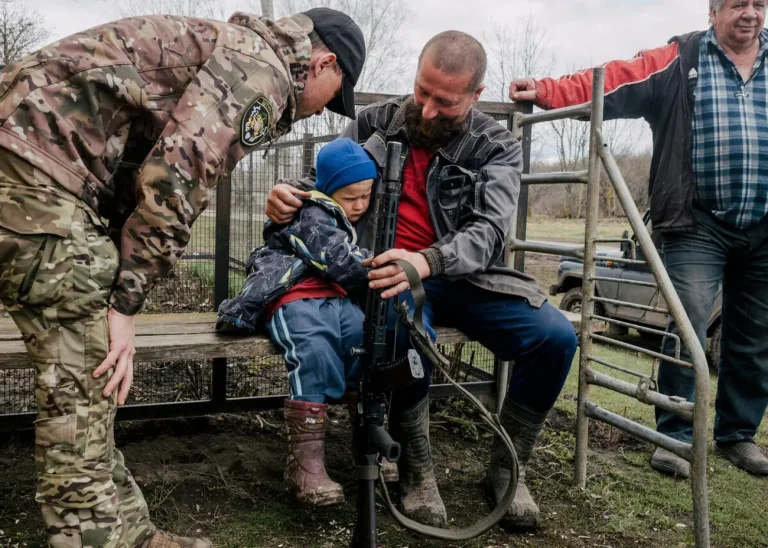Kursk Oblast: A Microcosm of the Russia-Ukraine War’s Devastating Impact
The Russia-Ukraine war, a conflict that has raged since 2014 with the annexation of Crimea and subsequent fighting in Donbas, escalated dramatically with Russia’s full-scale invasion in February 2022. The conflict’s ripple effects have extended beyond the immediate frontlines, impacting border regions like Russia’s Kursk Oblast. A recent New York Times article, penned by German-Russian photographer Nanna Geitman, sheds light on the devastation and loss of life experienced by residents of this region, but its narrative has sparked controversy and accusations of disseminating Russian propaganda.
Geitman’s report, based on several days spent embedded with Chechen special forces unit “Akhmat,” paints a picture of suffering endured by Russian civilians in Kursk Oblast. While acknowledging the impact of the ongoing hostilities, the article omits crucial context, notably the origins of the conflict and Russia’s role as the aggressor. This omission, critics argue, contributes to a skewed narrative that aligns with Russian propaganda efforts.
The Center for Countering Disinformation (CCD), a Ukrainian government body, strongly criticized the New York Times piece, arguing that it exemplifies how seemingly neutral journalism can inadvertently serve as a conduit for pro-Russian narratives. By focusing solely on the suffering of Russian civilians without acknowledging the broader context of the conflict, including Russia’s initial aggression and ongoing invasion of Ukraine, the article creates an incomplete and potentially misleading picture of the situation.
The CCD’s critique centers on the article’s presentation of “suffering peaceful Russians” without acknowledging that Russia initiated the conflict. By omitting this vital context, the report fuels the narrative of Russia as a victim rather than the aggressor, playing into the Kremlin’s propaganda machine. The article also omits mention of Ukrainian suffering, creating an unbalanced portrayal of the conflict’s consequences.
This incident raises crucial questions about the role of journalistic neutrality in times of war. While impartiality is a cornerstone of journalistic ethics, critics argue that it can be weaponized in conflicts where one party is clearly the aggressor. Presenting both sides of the story without acknowledging the underlying power dynamics and historical context can inadvertently legitimize the aggressor’s narrative and contribute to the spread of disinformation.
The controversy surrounding the New York Times article serves as a stark reminder of the complexities of reporting on war. Journalists face the challenge of balancing objectivity with the need to provide context and avoid amplifying propaganda. In the case of Kursk Oblast, the omission of crucial details surrounding the conflict’s origins has fueled criticism and raised concerns about the insidious nature of disinformation in modern warfare. The debate highlights the importance of critical media literacy and the need for consumers of news to actively seek diverse perspectives and verify information before accepting it as truth. The ongoing conflict’s impact extends far beyond the battlefield, influencing the information landscape and highlighting the crucial role of responsible and contextualized reporting in navigating the complexities of war. The situation in Kursk Oblast serves as a microcosm of the wider war, demonstrating the devastating human cost of conflict and the challenges of accurately representing it in the media.


